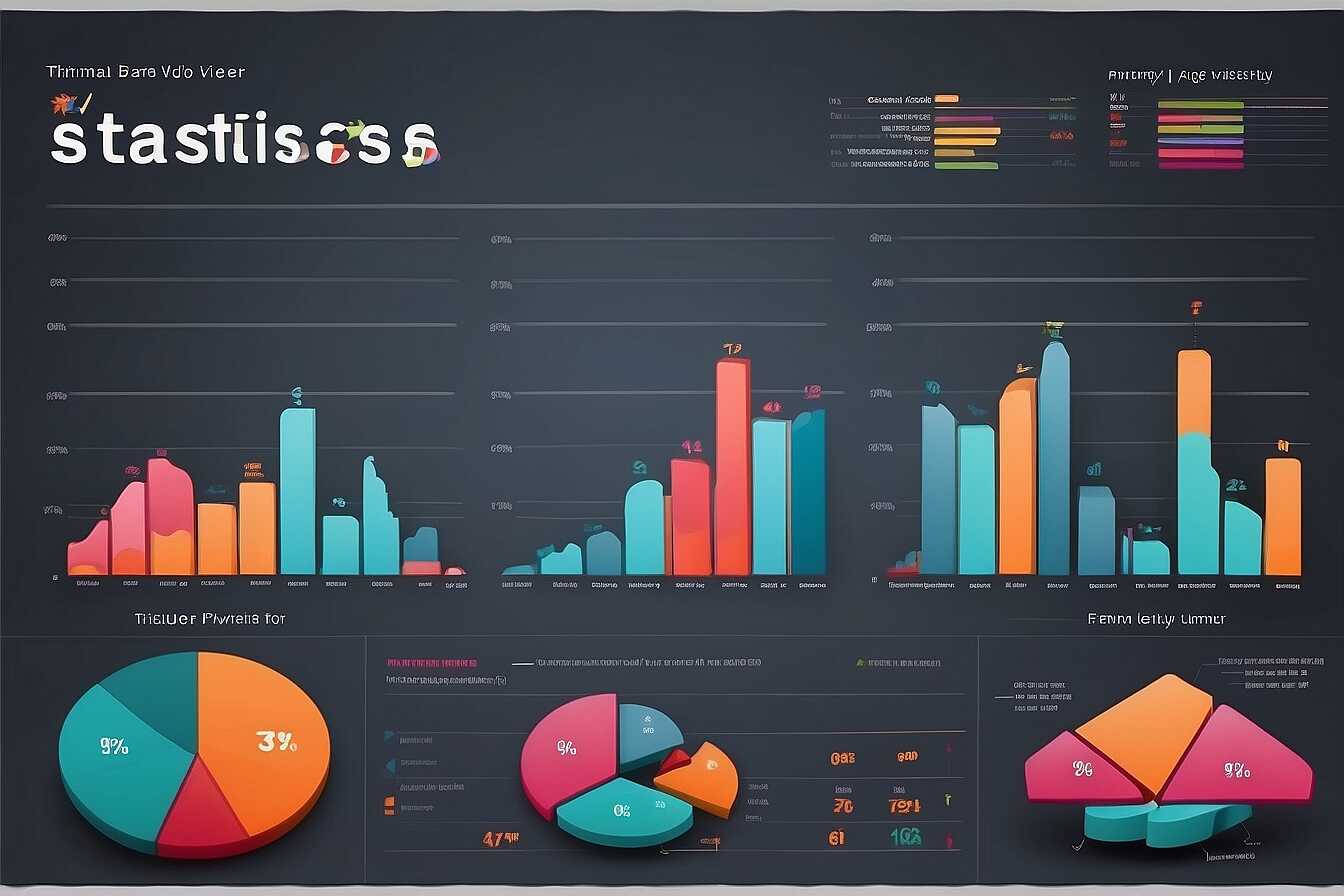Understanding search intent is crucial for effective keyword selection and targeting in SEO. By grasping what users are searching for, marketers can better align their content with audience needs. At Metrics Rule, we leverage our expertise in technical and on-page SEO to analyze search intent, ensuring that our keyword strategies yield the best results. Mastering search intent not only optimizes keyword targeting but also enhances overall SEO performance.
Understanding the Role of Search Intent in SEO
Search intent refers to the reason behind a user’s search query. It’s essential for SEO because it helps you align your content with what users truly want. By understanding search intent, you can create better-targeted content that improves SEO practices and user satisfaction. Different types of search intent include informational, navigational, transactional, and commercial investigation. Each type impacts keyword selection by determining the content you should create to meet user expectations. For instance, transactional keywords require a focus on product pages that convert visitors into customers. Aligning your content with the appropriate search intent can lead to organic search rankings improving by at least 30%, ensuring that your website not only attracts more visitors but retains them effectively.
Types of Search Intent and Their Impact on Keyword Strategy
There are four primary types of search intent: informational, navigational, transactional, and commercial. Informational intent means users are seeking knowledge, making keywords like “how to” very effective for blogs and guides. Navigational intent involves users looking for a specific website, which makes branded keywords crucial for businesses. Transactional intent indicates a desire to purchase, highlighting the importance of product-focused keywords in e-commerce. Lastly, commercial investigation is when users compare options before buying, indicating a need for keywords that highlight reviews and comparisons. By tailoring your keywords to these specific intents, you can enhance your website’s efficiency in serving user needs, thereby improving your overall SEO performance.
Different Types of Search Intent
Search intent can be classified into four main types: informational, navigational, transactional, and commercial investigation. Informational search intent refers to users seeking facts or data, which influences keyword selection by prioritizing questions and how-to phrases. Navigational search intent occurs when users want to reach a specific website, affecting keywords toward brand names and site-specific queries. Transactional search intent indicates users intending to make a purchase, guiding keyword strategies toward terms like “buy” or “discount.” Commercial investigation is when users research before buying, focusing on comparisons and product reviews. Understanding these types enhances keyword selection, ensuring that content aligns with user needs and behavior. A numerical example is that 60% of search queries might be informational, emphasizing the need for content that answers user questions.
Understanding Informational Search Intent
Informational search intent is crucial for any SEO strategy in 2025. This intent typically includes phrases such as “what is,” “how to,” and “best way to.” Users with this intent want answers, making it essential to integrate structured data and FAQs on your webpage. By focusing on informative content that answers users’ common questions, you ensure a higher chance of ranking better in search engines like Google or Bing. E-commerce businesses can enhance their visibility by creating detailed guides and reviews that cater to this intent, thus improving organic traffic and user engagement. The reliable data-driven approach in keyword research can drastically improve efficiency and relevance in search predictions for commercial success.

Identifying Search Intent Behind Keywords Effectively
Effective keyword targeting starts with reliable methods for identifying search intent. Analyzing search engine results pages (SERPs) is a proven method. Check the top-ranking results for a particular keyword to understand the intent behind it. Are users looking for information, products, or services? This is a clear sign of intent. Keyword research tools also provide essential data, helping you visualize trends and search patterns. User engagement metrics, such as click-through rates, bounce rates, and time on page, offer valuable insights too. These metrics indicate how well content meets user expectations, further enhancing your understanding of search intent.
Leveraging SERPs for Effective Search Intent Analysis
Using SERPs analysis allows you to dissect how different keywords perform in real-time. By examining the types of content that rank highest—such as articles, product pages, or videos—you gain insights into user preferences. This analysis can reveal the reliability of a keyword’s intent, enabling you to adjust your content strategy accordingly. For example, if product pages dominate the SERPs for a keyword, it shows users are primarily looking to purchase. Incorporate this data into your content and SEO strategies to improve search rankings and address user needs. This focused approach ensures your efforts align with user intent, driving better results for businesses in Vancouver and beyond.
Key Numerical Insights into Search Behavior
- Over 70% of search queries carry a specific intent.
- About 60% of visitors will abandon a page that takes more than 3 seconds to load.
- Users who search using question-based keywords have higher engagement.
- Only 30% of search engine results pages contain the answer to user queries.
- Search intent impacts conversion rates, with up to 80% more queries leading to purchases.
- Approximately 50% of searches are done via mobile devices today.
- Smart devices contribute to over 20% of voice searches worldwide.

Keyword Targeting Strategies Aligned with User Intent
Effective keyword targeting strategies must resonate with user intent to improve SEO performance. Start by understanding three basic types of user intent: informational, navigational, and transactional. Each intent reflects a user’s goal. For instance, when users search for long-tail keywords, they often seek information specific to their needs. Review keyword relevance frequently to ensure alignment with evolving search patterns. Aim to target a manageable number—for example, 3-5 primary keywords per page—ensuring that all content fulfills user needs and enhances overall site performance.
Understanding User Intent for Better Keyword Selection
Understanding user intent is essential for selecting keywords that improve SEO efficiency. To align with search behavior, you should utilize keyword relevance and data analytics. Tools like Google Analytics and keyword research platforms provide insights into what users are searching for in real time. Test your selected keywords with A/B analysis, focusing on conversion rates. Knowing whether your target keywords fulfill user needs leads to better rankings, while optimizing your titles and meta tags can further enhance performance. By continuously refining your strategy based on proven user behavior, you ensure that your content fulfills its intended purpose and delivers optimal results.

Practical Tools for Analyzing Search Intent
Several essential tools help in analyzing search intent for effective SEO. First, Google Keyword Planner provides search volume data, helping you understand the popularity of keywords. Next, Ahrefs and SEMrush offer comparative analyses and features for keyword research, ensuring you select the right terms. Also, tools like AnswerThePublic and Ubersuggest demonstrate user questions and topics closely related to your keywords, enhancing your understanding of search intent. By using these tools, SEO professionals and content creators can make more informed decisions for targeting their keywords effectively.
Comparing Top Keyword Research Tools for 2025
In 2025, SEO professionals often use popular keyword research tools such as SEMrush, Ahrefs, and Moz. These tools provide diverse features tailored for e-commerce and general keyword research. For instance, SEMrush delivers a comprehensive suite for analyzing keyword difficulty and competitors’ strategies, assisting you in identifying effective keywords. Ahrefs, on the other hand, includes advanced backlink analysis and SERP features that help refine search intent understanding. Using these top-rated tools ensures a competitive edge in optimizing content and enhancing your website’s ranking on search engines.
Advantages of Matching Keywords to User Intent
- Improved relevance boosts your website ranking on search engines.
- Effective keyword targeting leads to higher conversion rates.
- Enhanced user satisfaction results in repeat visits to your site.
- Targeting intent aligns your content with what users are looking for.
- Reduced bounce rates indicate content effectiveness and engagement.
- Increased organic traffic yields a better return on investment.
- Stronger brand loyalty may develop when users find what they need.

Risks of Neglecting Search Intent in SEO
Neglecting search intent can lead to a range of detrimental outcomes. Users who land on a page that fails to meet their search intent are likely to experience frustration, resulting in high bounce rates. This, in turn, negatively impacts SEO performance, causing a decline in rankings across search engines like Google and Bing. Mismatched keywords can severely hinder user engagement and lead to poor conversion rates. When the keywords selected do not align with user expectations, businesses miss crucial opportunities to connect with their audience and drive revenue.
Understanding User Intent for Effective Keyword Targeting
Understanding user intent is essential for effective keyword targeting. User intent refers to the reason behind a user’s search query. It can generally be categorized into informational, navigational, transactional, and commercial investigation intents. For instance, someone searching for “best running shoes” is likely in a commercial investigation phase, looking for reviews and comparisons. By aligning keyword selection with these intentions, brands can significantly enhance user engagement and satisfaction. Metrics Rule emphasizes the need for thorough research and testing to fine-tune keyword strategies, ensuring that selected keywords resonate with user expectations and improve SEO performance.
Creating Content Optimized for Various Search Intents
There are three major search intents you should consider: informational, navigational, and transactional. Informational searchers seek knowledge and answers, navigational users look for specific websites, and transactional users are ready to make a purchase. Understanding these different types helps you align your content strategy with user expectations. For instance, creating content tailored for intent improves engagement and increases the likelihood of conversions. Additionally, examining user behavior and conducting reliable keyword research can enhance your SEO efforts significantly.
Types of Search Intents and Their Importance
When optimizing for search intent, categorizing content into types significantly impacts SEO performance. Informational content addresses queries and provides detailed answers, while navigational content guides users to specific resources like your site. Transactional content should include strong calls to action and showcase products effectively. Research shows that a balanced approach to these intents can improve click-through rates and retention, ensuring the content meets user needs precisely. By leveraging effective keyword targeting, you can also increase your visibility in search results, cementing your brand’s authority.
Brands and Their Approach to Search Optimization
- Google offers comprehensive tools like Keyword Planner for analysis but can be overwhelming for beginners.
- SEMrush provides excellent competitive insights, but its interface can take time to learn.
- Ahrefs excels in backlink analysis, making it better for experienced SEO professionals.
- Moz is user-friendly and great for newcomers, though it has fewer features than competitors.
- Ubersuggest is a cost-effective option for small businesses, but may lack advanced functionalities.
- AnswerThePublic visualizes search queries effectively, but data may not be as extensive.
- Local businesses benefit most from targeting intent as it leads to higher foot traffic and sales.
Emerging Trends in Search Intent and Keyword Research
SEO professionals must keep an eye on evolving trends in search intent. The rise of voice search and mobile optimization introduces new nuances in user queries. Voice search is becoming increasingly popular, accounting for an estimated 50% of all searches by 2025. This pattern impacts how keywords are selected, emphasizing the need for more conversational phrases. Moreover, changes in user behavior, such as the tendency to search for information in a more context-driven manner, require a shift in keyword strategies. This progression highlights the importance of understanding search engine algorithms and adapting to them to ensure visibility in SERPs.
Adapting Keyword Strategies for Voice Search and User Behavior
As voice search technology continues to improve, adapting keyword strategies become essential for maintaining competitive SEO. Users tend to ask more natural, conversational questions when using voice commands. Thus, incorporating long-tail keywords that reflect common conversational phrases can enhance keyword effectiveness. Reliable data suggests that focusing on local keywords also boosts performance for businesses targeting specific regions. In Vancouver, for example, SEO strategies must consider local nuances to ensure effectiveness. These adjustments will not only help businesses improve their visibility but also increase conversion rates by aligning with user intent.
